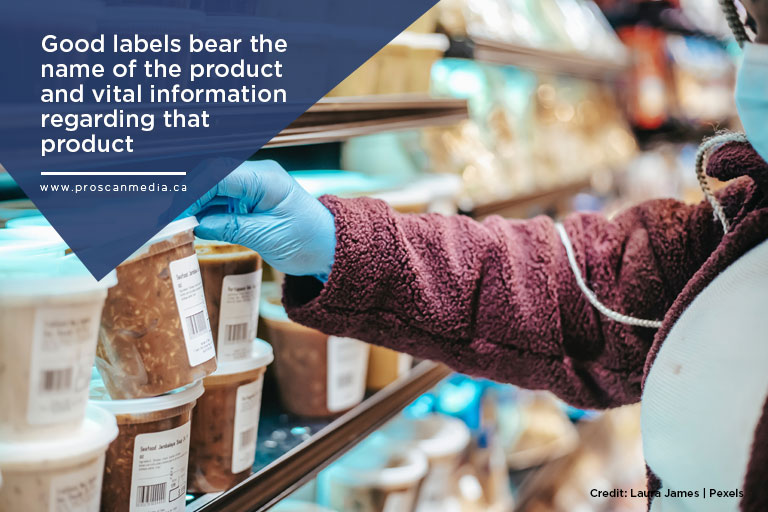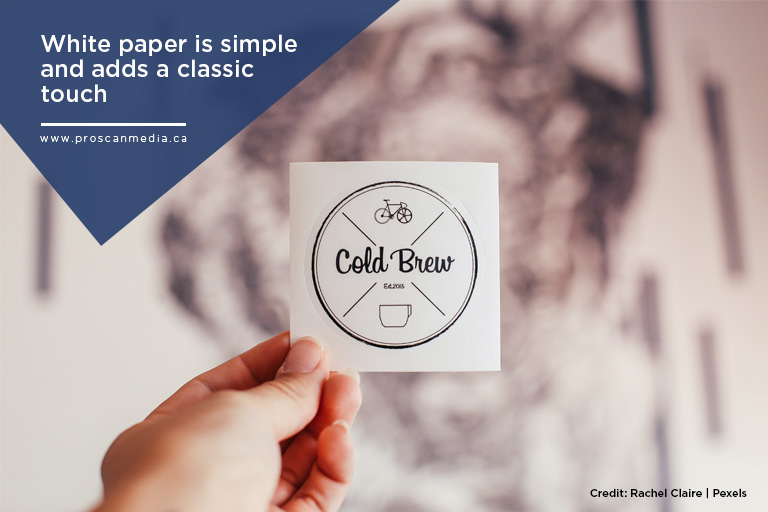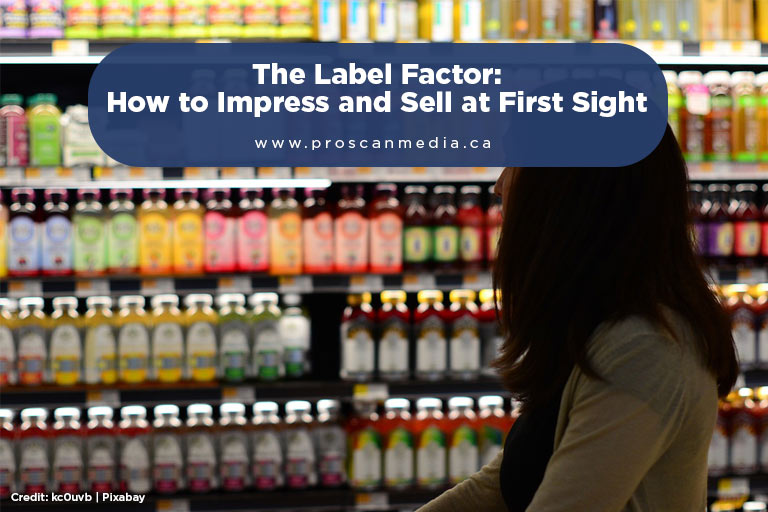Similar products are typically stacked together in stores. To determine which item they want to purchase, customers rely on the label. This is where brand recognition comes in. When your products are tagged with a label that has the distinct characteristics of your brand, customers will be able to distinguish them from your competitors’. The right label material and design can make your product stand out and be more memorable, increasing the potential of attracting loyal buyers.
Here’s a lowdown on the importance of labels when it comes to making your customers fall in love with your products at first sight.
Impact of a Good Product Label

The Consumer Packaging and Labelling Act and Regulations of Canada has standards and requirements that manufacturers of non-food product makers should meet. Under this law, the tags should accurately and meaningfully inform consumers before they are sold. Packaging plays a great role in helping people make informed purchasing decisions and protecting them from misleading claims or false information.
In addition, putting an effort into designing a memorable product label will help your business. Here are some advantages of great product label material and design:
- Informs about product ingredients
The Canadian government places great importance on the accurate labelling of consumer products, especially food and cosmetics. It’s vital that the public know what ingredients are in the product. Federal law sets specific regulations for certain products. These regulations dictate the use of the common name, ingredient listing, font size, and package size of goods. Adhering to these doesn’t just mean you are complying with legal standards, you are also being transparent to your customers.
- Provides warning of health risks
The Canadian government has decided to mandate the use of clear warning labels for food products high in sodium, sugar, and saturated fat starting in 2026. This decision was made to promote healthier eating choices and reduce chronic health risks. The article further clarified that this is not the government’s move to classify products as healthy or unhealthy.
- Provides a strategic place for putting instructions
No matter the type of product, the package should feature instructions for use and care.
- Promotes the product
Coca-Cola is not only famous for its bottle shape but also for the iconic Spencerian Script on a red rectangle background. It contains simple food product label elements that are distinct and memorable. The brand used its label effectively as a marketing tool to encourage purchase, making it one of the most successful products in history.
Pros and Cons of Different Label Materials

Different products can benefit from having attractive, memorable, and informative packaging. Knowing the impact of a good label should signal your search for quality materials.
The label material you choose depends on the product. Some can benefit from a simple and easy-to-read tag printed on white paper while others may benefit more from materials with a shimmery film.
To help you pick the right material, here is a rundown of the available options and the pros and cons of using them.
- White Paper
There are different white paper materials that you can choose from:
-
- White semi-gloss paper with general purpose adhesive
- White semi-gloss paper with removable adhesive
- White semi-gloss paper with freezer adhesive
Pros:
- Comes with general/removable adhesive
Both the gloss and semi-gloss varieties of white paper labels come with adhesives. It can be used for different surfaces and packaging. The removable and freezer adhesives are best used for rough substrates. Because of this feature, many manufacturers prefer white paper.
- Easier to find
The versatility and popularity of paper as a labelling material make it easier to find. Several manufacturers offer this in different varieties, so you only have to choose the type that suits your needs.
Cons:
- Easily peels off
Paper is more susceptible to the elements. It is not waterproof, so when stocks are placed in damp areas, they are likely to peel off.
- Lacks character/looks dull
Because of the simplicity of paper, labels that use this material do not appear polished. Even the glossy varieties are not as vibrant as other options available in the market.
- Specialty/Kraft Paper
Kraft materials are gaining traction because of the popularity of handcrafted products. Some specialty papers that you can find are:
-
- Dark brown kraft paper with general purpose adhesive
- Classic laid solar wine paper that comes with cold or wet adhesive
Pros:
- Adds a homemade or handcrafted feel
Handcrafted products tug the nostalgic heartstrings of many consumers. Dark brown kraft paper and classic laid solar wine paper give a vintage vibe like the wines contained in the bottles.
- More durable than paper
The edge that kraft paper has over regular white print is that they are made of sturdier materials. Brown paper is made of harder cardboard and classic laid are more resistant to water.
- Comes with adhesive
Like most label materials, kraft paper is manufactured with adhesives so they are ready for use.
Cons:
- May be harder to find
Kraft paper is not as widely used as other materials listed here primarily because they are directed toward cottage industries and small-scale manufacturers.
- Can still be washed off or peeled
Even if they are sturdier than white paper, the material is still not waterproof. Most would peel off when the product is placed in moist environments.
- Thermal Paper (Transferrable or With Adhesive)
Thermal paper is an environmentally sound option. It uses heat-sensitive and chemically-treated media that blacken when it passes under the head of the thermal printer. It is mostly used for barcodes and products that can be presented in simple packaging.
Pros:
- Affordable
This type of label has a lower shipping weight and doesn’t need a ribbon so it is one of the most affordable options available.
- Can be used for different surfaces
Like other label material options, thermal paper prints come with adhesives. They can be used on different surfaces.
Cons:
- Easily fades
Thermal labels can’t stand long exposure to direct sunlight or extreme heat. Like the receipts you keep in your wallet, the print will fade in time.
- Films
Film materials are flexible and durable. They can conform to the shape of the product container and are mostly waterproof. It’s easy to find this material on bottles and cans. They can also come in metallic varieties to add character to labels.
Pros:
- Can be used for different surfaces
Because of their versatility, films can be used for many products. The adhesives are also stickier so, when applied properly, they can be difficult to remove regardless of the surface they are applied to.
- Useful for “no-label look”
Perhaps the greatest advantage films have is that they can blend into the packaging. When used on cans, they can conform to the shape and cover the whole surface. It is also commonly applied to clear bottles for a see-through look.
Cons:
- Can be pricey
Although versatile, the printing demand for creating the shimmery or no-label look of film makes it more expensive than the other materials listed here.
Label and ribbon product manufacturers offer different materials to suit the need of various goods. To get the best labels for your product, get in touch with ProScan Media Products. We offer a wide range of product label materials and can print out any design you want. Call 289-372-3043 to connect and find the best option for your needs.


